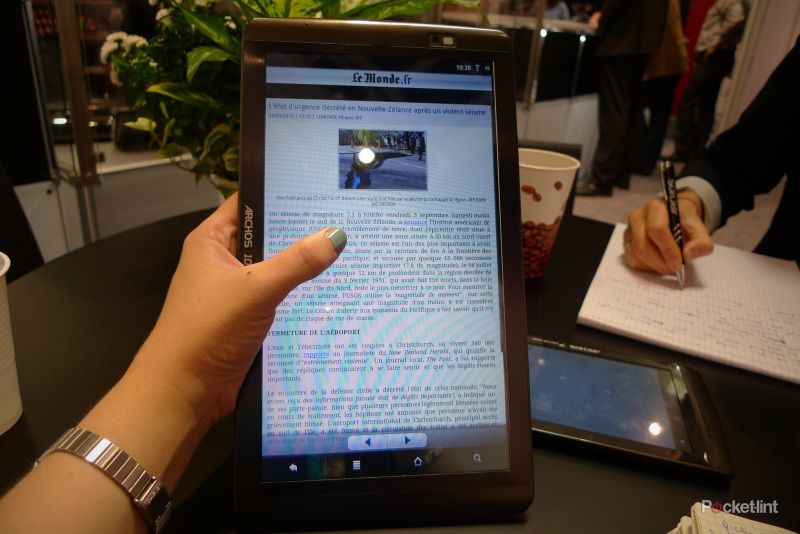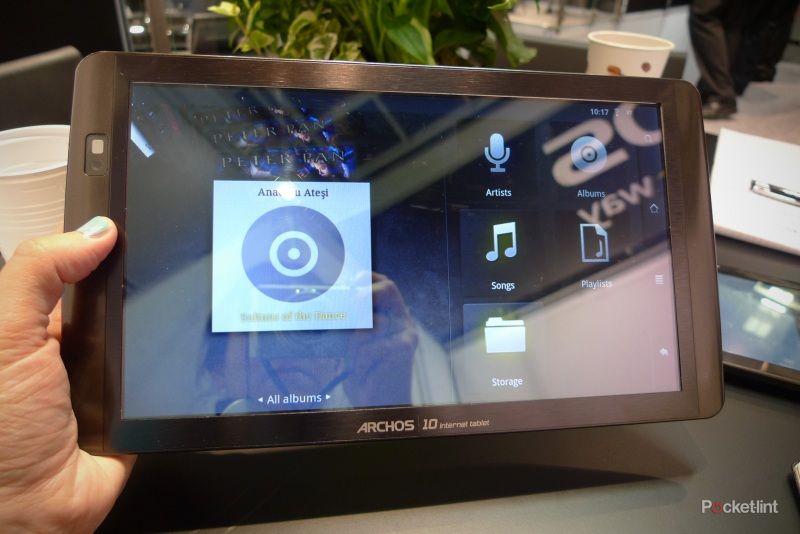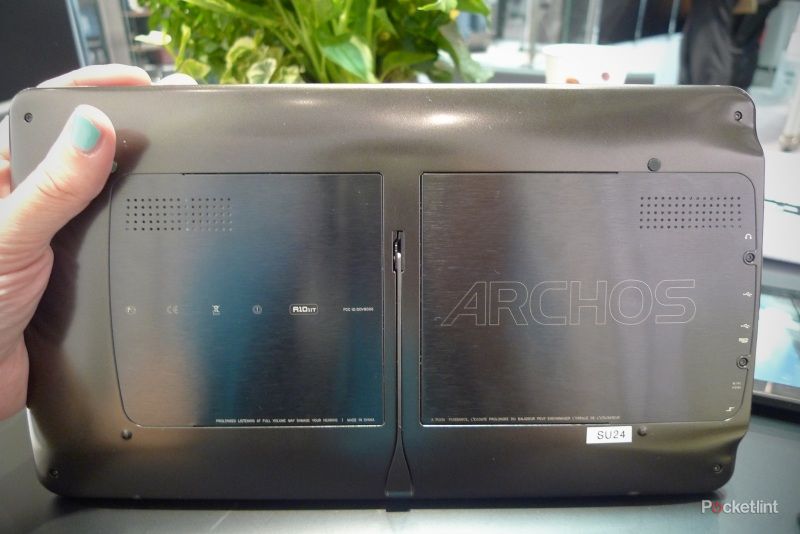This year's IFA tech show in Berlin was home to more tablets than your local chemist and, not to be outdone by the likes of Samsung and Toshiba, Archos stepped into the fray with the launch of five - yes, five - new Android-powered models.
Due out by mid-October and running on Android 2.2 (Froyo), the range comprises the Archos 28 with 2.8-inch touchscreen in 4GB (£99) and 8GB (£109) versions, the 8GB Archos 32 with 3.2-inch screen at £129, the 16GB Archos 43 with 4.3-inch screen at £199 and the 7-inch Archos 70 in 8GB (£229) and 250GB (£269) versions. Completing the lineup is the flagship model - the Archos 101. Sporting a 10.1-inch screen, the tablet will be available at £269 for the 8GB model and £299 for the 16GB version. We got our hands on the Android 101 at the launch and here is what we thought.
Our quick take
As we've seen in the past from Archos tablets, they often lack the premium build quality (which we can live with from a price point of view), but the slightly hampered user experience might mean it doesn't have the same wow factor from the get go. Certainly one of the most affordable tablets around, we look forward to getting the Archos 101 in for review and giving it a run for its money and seeing exactly what you get for not a lot of your bucks.

First Look
| FOR | AGAINST |
|---|---|
|
|

The 101 weighs 480g and measures only 12mm thick (270 x 150 x12mm). Under the chassis, it boasts 1GHz of processing power, along with Wi-Fi n and Bluetooth 2.1. You'll also find a USB port, an HDMI TV output, 720p HD video playback and a forward facing camera offering 640 x 480 video capture and stereo speakers. There's also an accelerometer, along with 3D open GL technology so that the 101 can be used for gaming.
As mentioned there are 8 and 16GB versions, but a microSD card slot will allow for expansion of the memory up to an additional 32GB.
The first thing that struck us about the 101 was the weight, it feels lighter than the iPad and Galaxy Tab (although it isn't), and there's barely any discernible difference between it and the feel of the smaller 7-inch Archos 70. It also feels flimsy, not helped by the somewhat cheap-looking plastic frame, again, something we've seen from Archos in the past. We would certainly worry about it coming to harm if jammed in a bag full of our belongings without a seriously sturdy protector case. That said, we think that all of the tablets currently on the market need sort of protection from the outside world, so we can't really hold that against it.
The 1024 x 600 pixel resolution touchscreen is bright and reasonably reponsive, although we did find that there was some slight lag, particularly when trying to zoom in and out using the pinch zoom method. Only the Archos 101 and 70 have capacitive touchscreens, while the smaller tablets in the range have resistive touchscreens, making them far less responsive, but explaining their affordability.
The 16:9 panel has a surprisingly wide viewing angle, even in very bright light, which will certainly give some of the big boys a run for the money. It's nice to see that Archos has recognised the fact that you might not want to constantly hold the tablet or balance it precariously on your lap, and has included a handy fold-out leg stand. It can be propped upright (similar to a photo frame) for watching videos, or it can be lowered to offer a better position for comfortably typing.
Navigation on the 101 is straighforward, with the icons logically laid out and the four buttons at the foot of the screen, helping things along. Like the Galaxy Tab, the four buttons include Back, Options, Home and Search, which takes mere seconds to work out so that you'll have it up and running in no time.

Web browsing is quick and easy, and thanks to the Adobe Flash 10.1 support, you can access all Flash-based web content, unlike on the pesky iPad, which currently offers no such support. This being Archos, it is no surprise to see that they are supporting a wide range of video and audio formats, so this should be a relative strength of the Archos Internet Tablet range.
However we were disappointed, but not surprised, to discover that Archos has once again restricted access to the Android Market. Instead you'll have to access the company's own AppsLib store, which isn't half as slick as the Android store, and lacks any real content of substance. No change here then for Archos who did exactly the same on previous devices. Yes, you can work around this, but it isn't the most consumer-friendly out-of-the-box experience.
Playing the driving game that was installed on the test model, we were pleased to see that the accelorometer does indeed offer an enjoyable gaming experience that's responsive and fast, much as we've seen on other Android tablets. The question here is whether you are going to be able to access premium content for gaming on the move.
To recap
It's reasonably priced and is slick and speedy to use, but the the lack of Android Market access is bound to unfuriate some Android fans
